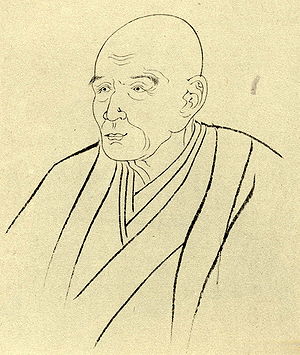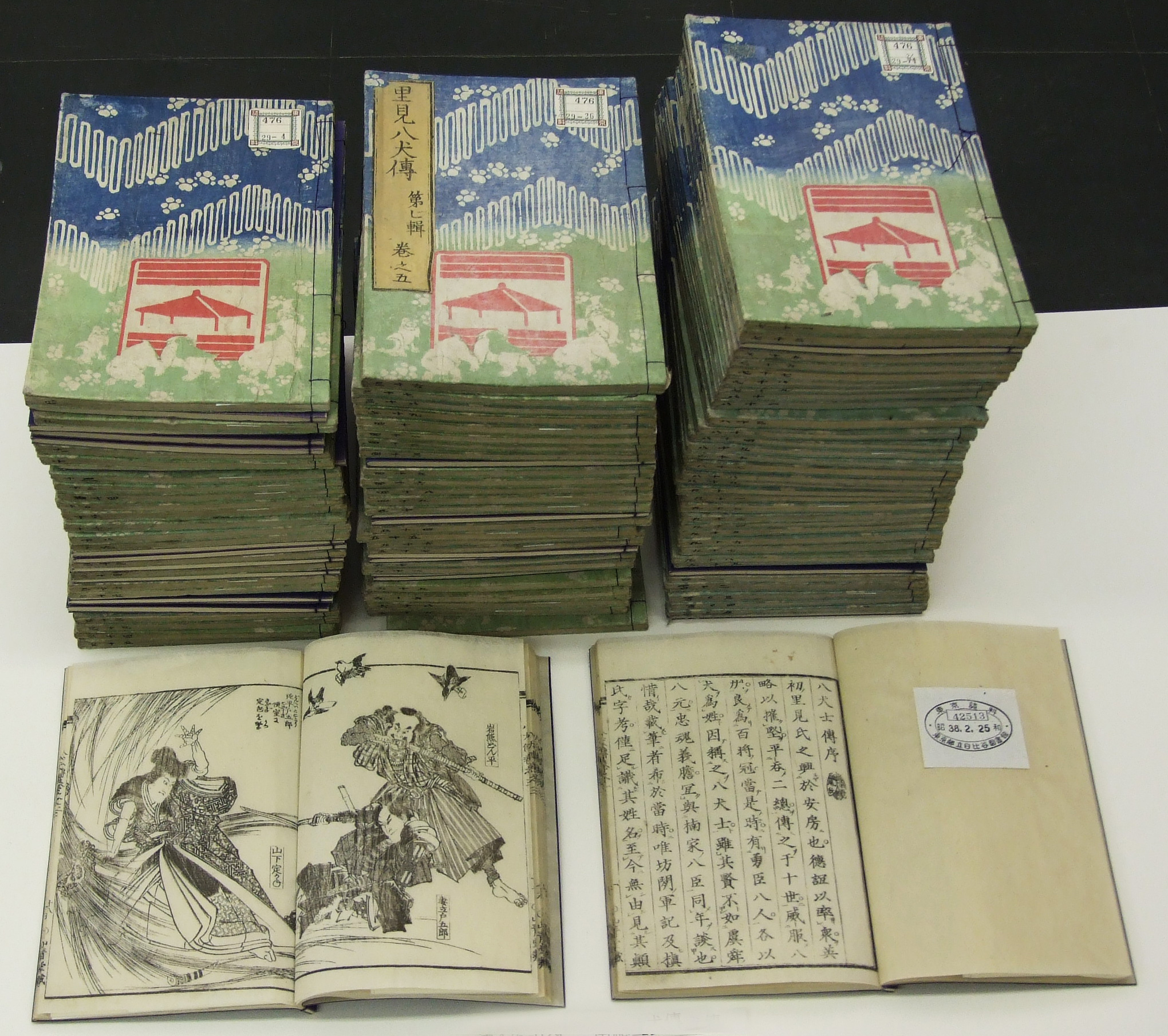Shirane, Haruo; James T. Araki (tr.);
Early Modern Japanese Literature: An Anthology, 1600-1900, Abridged
Columbia University Press (Translations from the Asian Classics), 2008, 550 pages [gbook]
ISBN 0231144156, 9780231144155
topics: | japanese | fiction | poetry |
One is struck time and again by the level of literacy and records being maintained. Books with images had had a long history when in the 18th century, the yomihon (books to be read) emerged, with literacy, as a popular genre. The Yomihon style of popular literature [yomi = read; books to be read, as opposed to be recited or picture-books to be seen]. incorporates many bizarre elements and was popular in Edo in the 19th c. They are often written in a elegant style with many allusions to classical Chinese and Japanese texts. The Hakkenden, excerpted next, is among the most popular of the genre.
Ch16: Late Yomihon: History and the Supernatural revisited
Kyokutei Bakin (1767-1848) (also known as Takizawa Bakin, b. to a Samurai family in Edo)
from The eight dog chronicles (composed 1814-1842) [Nansō Satomi Hakkenden (lit. Satomi and the eight “dogs”), an epic work of the late yomihon genre published in 106 volumes. It was written over thirty years, towards the end of which Bakin became blind and his daughter-in-law scribed the last parts. see Nansō Satomi Hakkenden ]
Yanagawa Shigenobu, cover illustration for Kyokutei Bakin, Eight Dog Chronicles [Nansō Satomi Hakkenden, 南總里見八犬傳] (early 19th c.) [Fusehime confronts her father, the samurai warrior Yoshizane, as she is about to commit suicide. she has refused to abandon her present dog-husband for a man he has selected.] "Please don't try to stop me. If love goes too far, it turns into cruelty. ..." Fusehime reached for her short sword, unsheathed it, and thrust it into her belly. She moved the blade sideways, cutting herself open in a straight line. A strange white mist rushed out of the wound. Undulating, the mist enveloped the string of 198 crystal prayer beads around her neck and lifted them up into the air. [The string breaks, and eight large beads, giving off light and circling, beoome dazzling globes of light.] Yoshizane and the others could do nothing to stop her. A harsh wind roared down from the mountains and carried off the eight soul-lights. p.496 [The eight beads are born as boys to women in the Edo area. They all have inu (dog) in their names, and have a similar birthmark. They are the eight heroes of this immense narrative, published as 108 volumes.] about the story, from the Tokyo Kabuki Theatre's notes, as cited in http://bibliodyssey.blogspot.in/2011/01/eight-dog-chronicles.html The Satomi clan is being attacked and its lord offers his daughter Princess Fuse to the warrior that will bring him the head of the enemy. It is his loyal dog that kills and beheads the enemy and, saying that her father must not go back on his word, Princess Fuse goes with the dog. Nevertheless, the Satomi clan is defeated and one of its loyal retainers goes to rescue Princess Fuse, shooting the dog, but unfortunately shooting Princess Fuse as well. The eight crystal beads of her rosary, each engraved with the Chinese characters of one of the Confucian virtues, goes flying through the air. Miraculously, each will be found with a newborn baby. These eight children, all of whom have the character inu for "dog" in their names, eventually meet and join together to restore the Satomi clan. The play features all the stars of the company and follows the adventures of the eight dog warriors as they meet and gradually join together, leading to a climactic fight on the roof of a dizzyingly high tower."http://www.kabuki21.com/aout2006.php --- The original volumes from the National Diet library: (http://www.library.metro.tokyo.jp/Portals/0/edo/tokyo_library/english/modal/index.html?d=33)

amitabha mukerjee (mukerjee [at-symbol] gmail) 2012 Sep 24